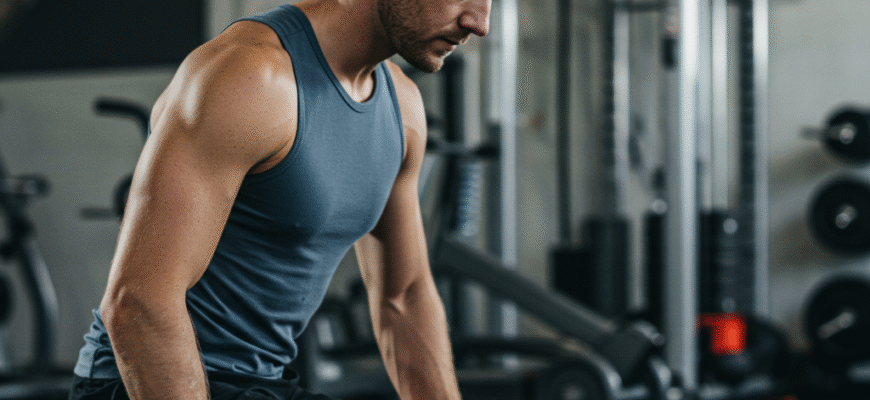Content
The Flow State: Why Gentle Movement Matters
The primary reason light cardio shines during active recovery is its effect on blood circulation. When you work out hard, your muscles work overtime, producing metabolic byproducts. While the old idea of “flushing lactic acid” isn’t entirely accurate (lactate is actually an energy source and is cleared relatively quickly), intense exercise does create waste products and micro-trauma within muscle tissue. Just sitting still allows these substances to linger and can contribute to that stiff, sore feeling known as Delayed Onset Muscle Soreness (DOMS). Engaging in light cardio, like a relaxed walk or an easy spin on a stationary bike, acts like a gentle pump for your circulatory system. This increased blood flow does two crucial things:- It helps deliver oxygen and nutrient-rich blood to your tired muscles, providing the building blocks needed for repair.
- It aids in clearing out metabolic waste products that accumulate during intense exertion, potentially speeding up the removal process.
Tackling Stiffness and Soreness
Ah, DOMS. That familiar ache that can set in 12-72 hours after a workout you’re not accustomed to. While active recovery won’t magically erase all soreness, many people find it significantly reduces the severity and duration. Gentle movement prevents muscles and connective tissues from stiffening up excessively. Think about it: when you stay completely immobile, muscles can feel locked up. Light activity encourages joints to move through a comfortable range of motion, promoting synovial fluid circulation (the body’s natural joint lubricant) and keeping things feeling a bit looser and more pliable. This isn’t about stretching sore muscles aggressively, which can sometimes do more harm than good. It’s about gentle, rhythmic movement that encourages blood flow and reduces the sensation of tightness. A slow walk or some easy laps in a pool can feel surprisingly good on legs that were screaming during yesterday’s squats or run.Mind Games: The Psychological Edge
Recovery isn’t just physical; it’s mental too. After pouring significant effort into a workout, hitting the couch can sometimes feel unproductive, even if rest is needed. Active recovery offers a psychological boost. Engaging in light activity can provide a sense of accomplishment and helps maintain a routine, which can be beneficial for overall consistency and motivation. It feels like you’re still actively participating in your fitness journey, even on a ‘rest’ day. Furthermore, light cardio often takes place outdoors or in a relaxing environment. A walk in the park, a gentle bike ride along a scenic route, or a swim can be inherently stress-relieving. It’s a chance to clear your head, enjoy some fresh air, and shift your focus away from muscle aches, promoting mental freshness alongside physical recovery.Putting Active Recovery Cardio into Practice
Integrating light cardio for active recovery is straightforward. The key is low intensity. You should be able to hold a conversation comfortably throughout the activity. If you’re breathing heavily or feeling strained, you’re pushing too hard – that’s another workout, not recovery.Choosing Your Activity
Variety is great, but stick to activities you enjoy and that feel genuinely easy:- Walking: The undisputed champion of accessibility. Aim for a relaxed pace on level ground.
- Cycling: Stationary or outdoors, keep the resistance low and the pace easy. Focus on spinning the pedals smoothly.
- Swimming: The buoyancy of water makes swimming or even just water walking incredibly low-impact and therapeutic for sore muscles and joints.
- Elliptical: Offers a low-impact cardio option if you prefer gym equipment. Keep resistance minimal.
- Light Rowing: Focus on smooth, easy strokes, not power output.
Timing and Duration
You can incorporate active recovery in two main ways:- As a Cool-Down: Immediately following your main workout, spend 10-15 minutes performing very light cardio. This helps gradually bring your heart rate down and kickstarts the recovery process.
- On Rest Days: Instead of complete inactivity, schedule a dedicated 20-40 minute active recovery session involving light cardio. This is particularly useful the day after a very demanding workout.
Remember the golden rule of active recovery: it should feel restorative, not taxing. The goal is to facilitate recovery, not add more stress to your body. If an activity causes pain or feels like hard work, ease off or choose something gentler.
Active vs. Passive: Finding the Balance
Is passive recovery – completely resting, perhaps with naps or just lounging – ever the right call? Absolutely. There are times, particularly after extreme exertion, illness, or injury, when the body simply needs complete rest. Overtraining is a real risk, and sometimes the best thing you can do is nothing. Passive recovery allows the nervous system to fully calm down and conserves maximum energy for repair. However, for the soreness and fatigue that follows most typical hard workouts, active recovery often proves more beneficial for reducing stiffness and promoting faster readiness for the next session. The key is listening to your body. If you feel utterly drained or genuinely unwell, prioritize rest. If you’re just feeling muscle soreness and a bit sluggish, a gentle active recovery session is likely the better choice.Important Note: Active recovery is for general muscle soreness and fatigue from exercise. It is not a substitute for proper medical evaluation or treatment if you suspect an injury. Always consult with a healthcare professional for persistent pain or specific injuries.









